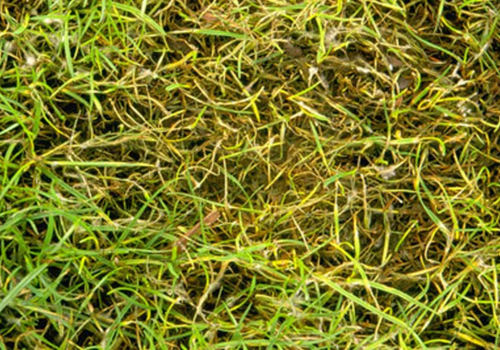A lush, green lawn is the pride of any homeowner or gardener. However, achieving and maintaining such a lawn requires proper nutrition, which is where fertilisers come in. Lawn fertilisers provide essential nutrients that support healthy growth, improve resistance to pests and diseases, and enhance the overall appearance of your grass.
Understanding Lawn Fertilisers
The nutrient composition of lawn fertilisers supply three primary nutrients, commonly referred to as N-P-K, which stands for:
Nitrogen (N) – promotes leafy, green growth.
Phosphorus (P) – supports root development and strength.
Potassium (K) – improves disease resistance and overall lawn resilience.
These nutrients are usually present in different ratios depending on the specific needs of your lawn. The correct balance will depend on your soil type, grass species, and environmental conditions.
Types of Lawn Fertilisers
There are several types of lawn fertilisers available as follows:
Granular vs. Liquid Fertilisers
Granular fertilisers – granular fertilisers are solid pellets that release nutrients gradually over time. They can be either slow-release fertilisers like KissMyGrass Slow Release Lawn Fertiliser 20.6.8 (3 month), which provide nutrients over several weeks, or fast-acting fertilisers like KissMyGrass Lawn Revivor and Moss Destroyer, which dissolve faster for immediate results.
Liquid lawn fertilisers – liquid lawn fertiliser is diluted in water and applied using a sprayer or watering can. They provide an instant nutrient boost but require more frequent applications.
Organic vs. Synthetic Fertilisers
Organic fertilisers – organic fertilisers are made from natural materials such as compost, manure, bone meal, or seaweed extracts. The KissMyGrass Seaweed Liquid Lawn Fertiliser contains 100% seaweed extract to help strengthen grass roots and offer disease resistance.
Synthetic fertilisers – synthetic fertilisers are manufactured chemically to provide precise nutrient ratios. They work quickly and efficiently.
Specialised Fertilisers
Seasonal fertilisers – these fertilisers are designed for seasonal suitability for spring, summer, autumn, or winter. Each has a nutrient composition suited to seasonal growth needs. Seasonal fertilisers are available in liquid form (KissMyGrass Spring and Summer Boost Liquid Lawn Fertiliser) and granular (KissMyGrass Premium Spring & Summer Lawn and Sportsfield Fertiliser 12.5.5+)
Weed and feed – weed and feed fertilisers such as KissMyGrass Weed, Feed & Moss Killer combine fertiliser with herbicides to nourish the lawn while controlling weeds.
Starter fertilisers – starter fertilisers like KissMyGrass Pre-seeding Lawn and Sportsfield Fertiliser 6.9.6 are high in phosphorus to promote strong root development in newly seeded lawns.
How to Choose the Right Lawn Fertiliser
Selecting the right fertiliser depends on factors like grass type, soil quality, and climate. Here are some steps to help you decide:
Test your soil – conduct a soil test to determine nutrient deficiencies and pH levels.
Identify your grass type – different grass species have varying nutrient requirements. Warm-season grasses need different fertilisation schedules compared to cool-season grasses.
Consider seasonal suitability – use a nitrogen-rich fertiliser such as KissMyGrass Premium Spring & Summer Lawn and Sportsfield Fertiliser 12.5.5+ in spring for growth, and a potassium-rich formula in autumn to strengthen roots for winter, such as KissMyGrass Autumn & Winter Vitality Liquid Lawn Fertiliser.
Evaluate lawn problems – if your lawn suffers from pests, weeds, or disease, opt for a fertiliser with additional treatments, such as pest control or weed prevention.
Lawn Fertiliser – Application Method
Proper application ensures that fertiliser benefits the lawn without causing harm. Follow these best practices:
Read the label – always follow manufacturer instructions for dosage and application frequency.
Apply evenly – use a Lawn Spreader for granular fertilisers or a sprayer for liquid fertilisers to ensure even distribution.
Water after application – lightly water the lawn after fertilising to help nutrients penetrate the soil.
Avoid over-fertilising – excess fertiliser can burn grass, cause rapid, weak growth, and contribute to environmental pollution through runoff.
Fertilise at the right time – early morning or late afternoon is ideal to prevent evaporation and ensure better absorption.
Lawn Fertiliser from Boston Seeds
Choosing the right Lawn Fertiliser and applying it correctly can make a significant difference in maintaining a healthy, green lawn. At Boston Seeds, all our lawn fertilisers have been formulated to improve the establishment of your lawn by encouraging seed growth, and to maximise the quality of your grass. Whether you prefer organic or synthetic options, liquid or granular forms, understanding your lawn’s needs is key to achieving optimal results. With proper fertilisation, your lawn will thrive, enhancing the beauty of your outdoor space for years to come.
Our lawn fertilisers are all available for online purchase, in a variety of quantities, and we offer a next day nationwide delivery option. Applications are always welcome for trade accounts too!
Our Lawn Fertiliser Advice articles have lots of useful information and, of course, our sales team is available to answer any questions - simply contact us by email or telephone on 01205 280069.


